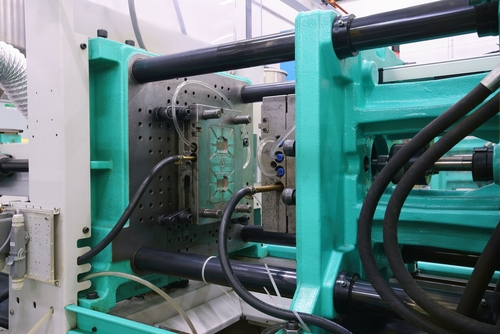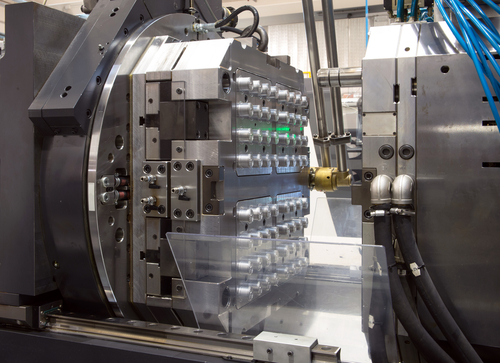Injection molding is a process used for creating different parts, components, and products by injecting ceramic or plastic compounds into a mold created per exact specifications based on the product requirements. The process of injection molding consists of several stages that, when completed, provide a final product.
The products received through the process of injection molding are used for various applications, and they range from medical ceramic injection molding components and different types of specific bioceramic parts to various injection molding products fit for use in many different industries. But, let’s first inspect what components are used in injection molding.
What are the components of the injection molding process?
The process of injection molding rests on adequate and synchronous functioning of the three main mechanical components – the injection molding machine, the mold, and the molding.
 The injection molding machine
The injection molding machine
The majority of injection molding machines are divided into two separate units – the unit in charge of injection and the unit in charge of clamping. The injection unit injects the necessary compound into the mold, while the clamping unit opens and closes a die.
There are two different clamping methods used during injection molding – the straight-hydraulic type and the toggle type, each suitable for different purposes behind specific injection molding requirements.
- Advantages of toggle clamping: Toggle clamping boasts lower energy use and lower costs of the process.
- Advantages of hydraulic clamping: Hydraulic clamping provides improved control of clamping speed and easier adjustment of clamping force.
The mold
Mold represents a hollow metal block into which a specific injection molding compound is injected during the process. The mold can be made from different materials, each of which bring different benefits to the injection molding process.
For example, steel molds are more expensive to produce, but they tend to outlast molds made from other materials, making them a worthwhile investment in the long run. Injection molds consist of two main parts:
- Injection mold (A plate)
- Ejector mold (B plate)
The molding
Molding consists of the following components:
- Sprue: Part of the molding used for introducing the adequate compound into the molding process.
- Runner: Used for leading the compound into the cavities of the mold.
- Gate: The opening through which the compound is injected into the mold.
Molds are designed so they have multiple cavities leading into the mold to enable faster, easier, and more efficient process of filling the mold with the compound. Also, this allows for more products to be produced with a single filling.
Finally, molding is usually designed in such a way that it has the same runner length to each of the sprues, so as to allow for simultaneous filling of the mold in the same amount of time. This further helps speed up the process of injection molding.
 Which company can perform high-quality injection molding for different applications?
Which company can perform high-quality injection molding for different applications?
Wunder Mold employs qualified, knowledgeable, and experienced injection molding professionals who are familiar with all the nuances and details of the injection molding process. They possess a detailed understanding of the inner workings of the different components of injection molding, allowing them to design and manufacture a wide selection of different components required for varied applications across multiple industries. This is how we ensure we provide you an end-product that suits your specific needs and requirements.
Wunder Mold is a company with more than twenty-five years of experience performing high-quality ceramic and plastic injection molding according to the exact specifications of our valued customers. All the components we manufacture abide by our high standards of quality to ensure maximum usability. Reach out to us by sending an email at sales@wundermold.com or by calling (707) 448-2349.
 The injection molding machine
The injection molding machine Which company can perform high-quality injection molding for different applications?
Which company can perform high-quality injection molding for different applications?